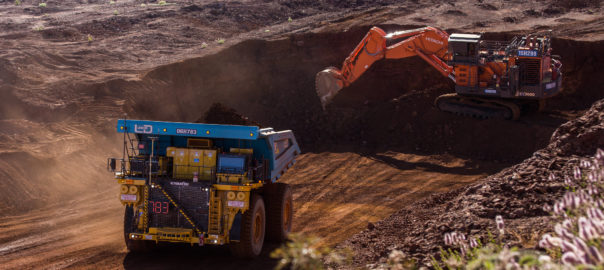Vale says it has signed an agreement with Vivo (Telefônica Brasil) to implement a private 4G/LTE network at its operations in Brazil.
The network will help the miner optimise its use of autonomous equipment, which requires a wide coverage area and high traffic capacity for a significant amount of data. Almost R$21 million ($5 million) will be invested in this project, Vale said.
This will make Vale and Vivo the first companies to deploy a private LTE network with these characteristics in the country, according to Vale.
From the first half of 2020, the network will be available at Carajás (Pará) mine, where three autonomous drills are already operating and autonomous trucks will be adopted soon. Then, this innovation will be applied at Brucutu mine (pictured), in São Gonçalo do Rio Abaixo (Minas Gerais), where 13 autonomous trucks operate. This network also has the potential to be used to connect dam monitoring instruments, the company said.
Vale said of the network: “It will boost Vale’s autonomous vehicles program, which aims to increase safety by removing employees from the risk area. Autonomous equipment also generates operational efficiency and sustainability gains increasing equipment useful life by almost 15% and reducing fuel consumption and maintenance costs by almost 10%.”
Vivo’s solution was chosen due to its reliability and experience in private LTE networks, Vale said. Safety and the possibility of converging different types of traffic on the same network – such as data, voice, and video – were also considered. At Brucutu mine, for example, the autonomous trucks currently operating on a WiMax network, which will be migrated to the new network in the future.
Gustavo Vieira, Vale’s IT director, said: “In addition to the benefits regarding data volume and coverage, the use of LTE is also an important investment due to it is scalability; all mobile phone technology development must comply with this standard from now on. Fourth generation is already being used; thus, technology upgrades will cost less than those for technologies that are not commonly used.”
Alex Salgado, Vivo B2B vice president, said a private LTE solution meets specific needs of businesses while meeting the requirements of mission-critical applications that demand “high safety, mobility in production lines, free-interference spectrum, and traffic prioritisation, as well as connecting a high volume of IoT devices in an open and widely available ecosystem”.
The partnership will enable Vale to use Vivo’s services in these regions. Vivo will also provide 4G coverage, which will help communication among employees of the mine operations.
In Latin America, this partnership model is only currently available in Chile, which is being tested. Vale also uses private 4G/LTE networks in its operations in Canada and Malaysia, it said.










